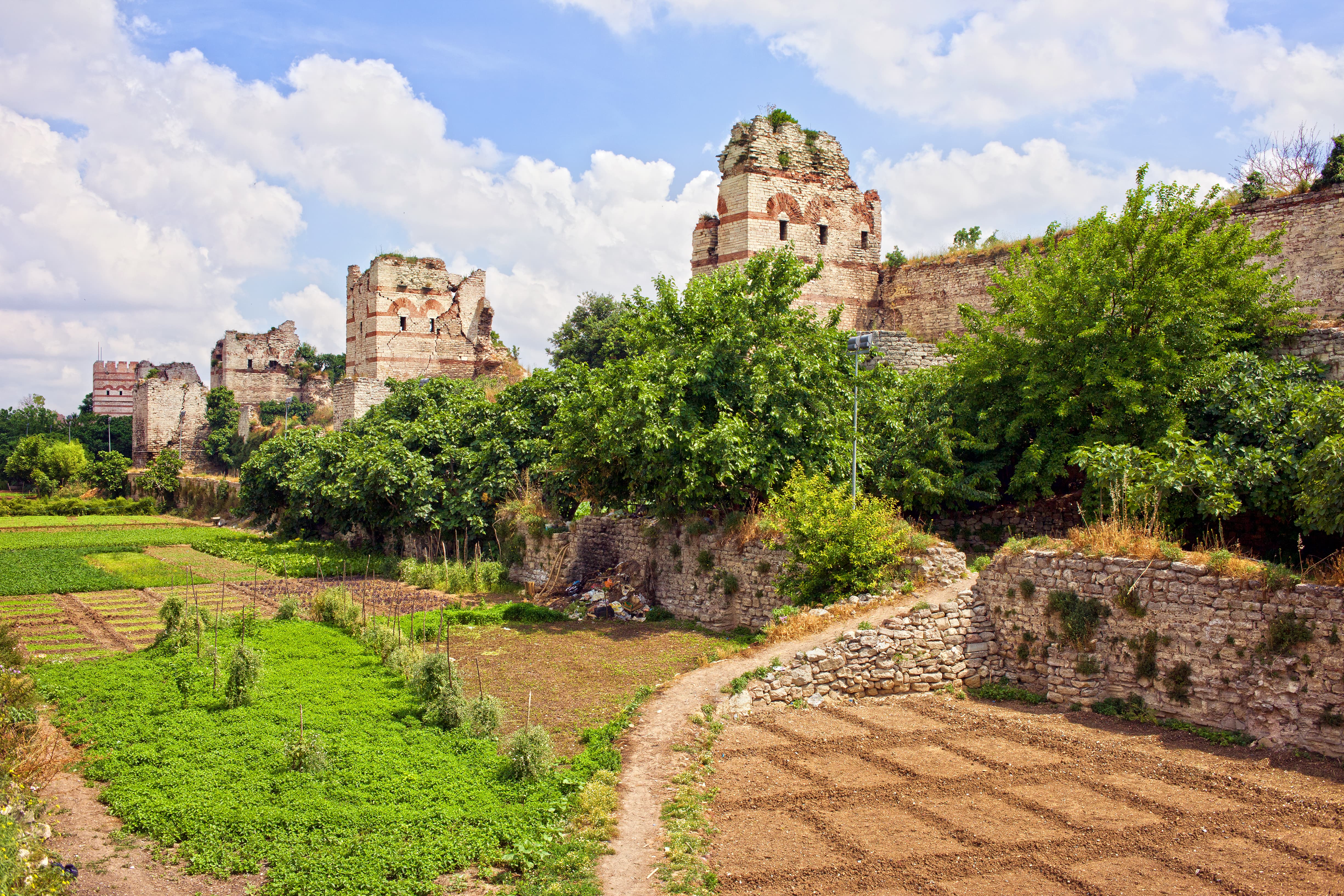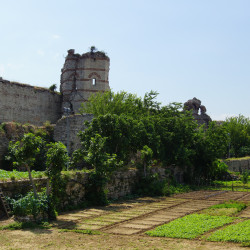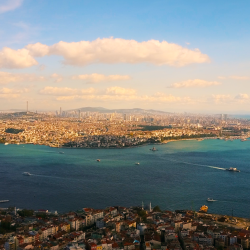Gates Of The Theodisian Walls
How about we define the response to the question, Where are the Theodisian walls? The walls were originally built from Marmara to Halic by Theodosius, but the section beginning from the Palace of Porphyrogenitus in the Ayvansaray neighborhood of the Fatih district towards Halic was rebuilt by successive emperors in the past. The walls up to the palace are therefore included in the Theodosian walls. There are now 9 operational gates on the Theodosian walls.
Because of the monogram of Jesus on the first one, it is referred to as the Gate of Christ. The First Military Wall is another name for this structure. A botanical garden contains the gate. The Golden Gate, the most magnificent of the gates, is accessible via the gate. Emperors used to enter the city through this gate following a military victory. It was once covered with gold decorations, hence the name "Golden Gate."
It now is inside Yedikule Cemetery, in order to meet the magnificence of the gate you should see it from inside the cemetery but you can also observe it from Yedikule Dungeons’ yard. You will see Yedikule Gate which received its name from the dungeons when you walk along the walls. There are many vegetable patches alongside the walls of Yedikule Gate.
As you make your way to Belgrad Gate, you can readily see the walls' three-layered defense system. These are the fortifications that Mehmet the Conqueror actually faced during the conquest of Istanbul. When you enter through the Belgrad Gate, you will notice a stairway. You can use these stairs to ascend to the Belgrad Gate's defensive towers, where you can see a different view of Istanbul's surroundings. Silivri Gate and Mevlevihane Gate are the other gates. You will arrive at Topkapi by passing through these gates. During the conquest of Istanbul, the gate was demolished and subsequently reconstructed. Here are two mosques that Sinan the Architect designed. The following important one is Edirnekapi. It is located on Istanbul's tallest hill.
Touring Around The Walls Of Istanbul 
These walls are still surviving in a few places. You can observe the walls and then continue learning about the space to which these walls belong. It is one of the best ways to spend a day in Istanbul sightseeing because the city walls will act as a road map and make your trip more organized.
Your adventure begins in Fatih's Ayvansaray neighborhood. Because this is the first neighborhood Istanbul begins to develop, it is comparable to the city's birthplace. You can first look at Fatih before beginning to go along the walls and learn about the gates and what's around them. You can visit the Horse Bazaar, Women's Bazaar, and Fatih Mosque here.
The Yenikapi Mevlevi Lodge will be visible once you enter Mevlevihane Gate. Dervishes conduct their rituals at Mevlevi Lodge. If you are interested in Istanbul's religious culture, it is advised that you go see a Whirling Dervishes performance. If you're interested, this is a fantastic chance to see one of the most well-known cultural and religious traditions in history. Visit Arakiyeci Ibrahim Mosque and Kara Ahmet Pasha Mosque, two mosques created by Sinan the Architect, while you are in the Topkapi area. The first building has significance because of its decorated glazed tiles, and the second building has significance due to its madrasa-like yard and interior pen carvings. On your trek beside Istanbul's Theodisian walls, you will pass across a few mosques.
Attending an Old City Tour, where you will visit Byzantine and Ottoman treasures, is a must if you want to learn more about the building of Ottoman mosques and how they operate or are already interested in their architecture. The Mihrimah Sultan Mosque and Complex, the Kariye Museum, which is renowned for its frescoes and mosaics, and then the Palace of Porphyrogenitus, which is the only fragment of the Bleherna, the Byzantine palace, can be found after you arrive in the Edirnekapi district. Bleherna, the first imperial structure taken following the invasion of Istanbul, was operational in the 12th century.
The Spoonmaker's Diamond, which is on exhibit in the Topkapi Palace Museum to enchant visitors, was most intriguingly discovered in the Porphyrogenitus Palace. Attending a Topkapi Palace Tour while you are there is a must if you want to see this 86-carat pear-shaped diamond, which is thought to be the fourth largest diamond of its kind. The second level of the Theodosian walls starts here, completing the first level
Frequently Asked Question
Where is the location?
The Chora church is nearby.
Are Theodosian Walls still exist?
These walls are still surviving in a few places.
Why you should visit there?
You should go there if you want to find out more about how Ottoman mosques were constructed.
 Bulgarian
Bulgarian  Indonesian
Indonesian  Urdu
Urdu  Taiwanese
Taiwanese  Russian
Russian  Romanian
Romanian  Portuguese
Portuguese  Persian
Persian  Macedonian
Macedonian  Korean
Korean  Japanese
Japanese  Italian
Italian  Indian
Indian  Hungarian
Hungarian  Greek
Greek  German
German  Croatian
Croatian  Chinese
Chinese  Arabic
Arabic  French
French  Spanish
Spanish  English
English 




